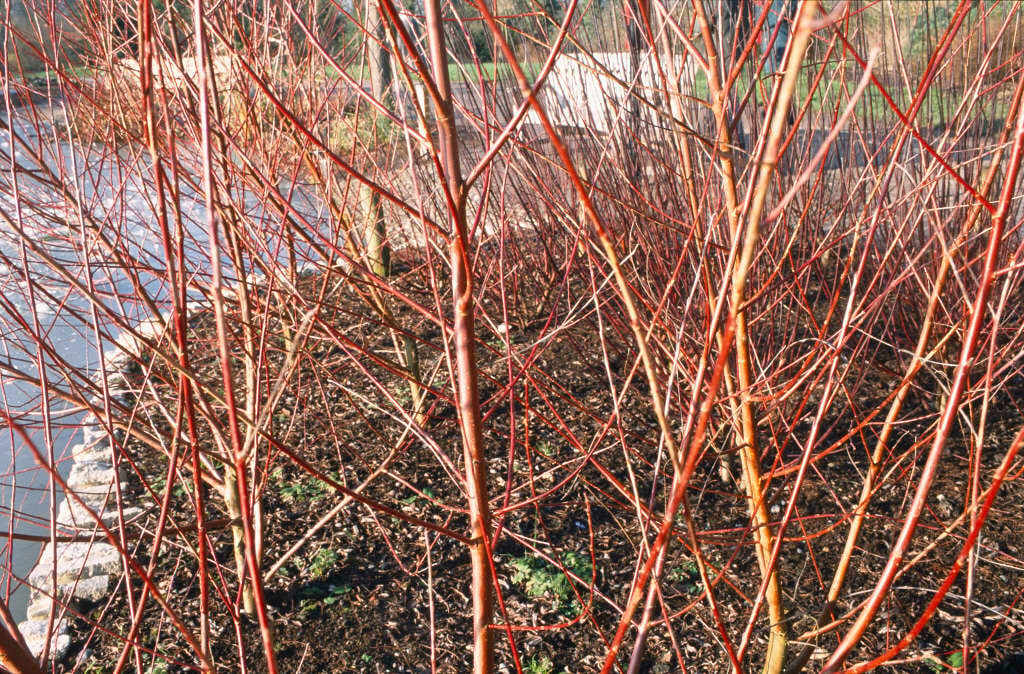Salix alba var. vitellina 'Britzensis' (m)
coral bark willow
A vigorous medium-sized deciduous tree of compact habit, with bright red young shoots and narrow lanceolate mid-green leaves and insignificant yellowish catkins with the young leaves in spring
Other common names
scarlet willowSynonyms
Salix alba subsp. vitellina 'Britzensis'Salix alba 'Chermesina' hort.
see moreSalix alba 'Britzensis'
Size
Ultimate height
Higher than 12 metresTime to ultimate height
20–50 yearsUltimate spread
Wider than 8 metresGrowing conditions
Moisture
Moist but well–drained, Well–drainedpH
Acid, Alkaline, NeutralColour & scent
| Stem | Flower | Foliage | Fruit | |
| Spring | Yellow | Green | ||
|---|---|---|---|---|
| Summer | Green | |||
| Autumn | ||||
| Winter | Orange Red |
Position
- Full sun
- Partial shade
Aspect
West–facing or East–facing or South–facing or North–facing
Exposure
Exposed or Sheltered Hardiness
H6Botanical details
- Family
- Salicaceae
- Native to GB / Ireland
- No
- Foliage
- Deciduous
- Habit
- Bushy
- Genus
Salix are deciduous shrubs and trees of diverse habit, with simple leaves and tiny flowers in catkins, male and female usually on separate plants. Some are valued for their brightly coloured winter shoots, others for their foliage or showy male catkins
- Name status
Accepted
How to grow
Cultivation
An easy to grow fast-growing tree for sun or partial shade
Propagation
Propagate by softwood cuttings in early summer or hardwood cuttings in winter
Suggested planting locations and garden types
- Coastal
- Wildlife gardens
- Cottage and informal garden
- Hedging and screens
Pruning
Pruning group 1. Suitable for pollarding every 3-4 years and coppicing
Pests
May be susceptible to aphids, caterpillars, leaf beetles, sawflies, willow scale
Diseases
May be susceptible to willow anthracnose, scab, canker, honey fungus and rust
Get involved
The Royal Horticultural Society is the UK’s leading gardening charity. We aim to enrich everyone’s life through plants, and make the UK a greener and more beautiful place.
